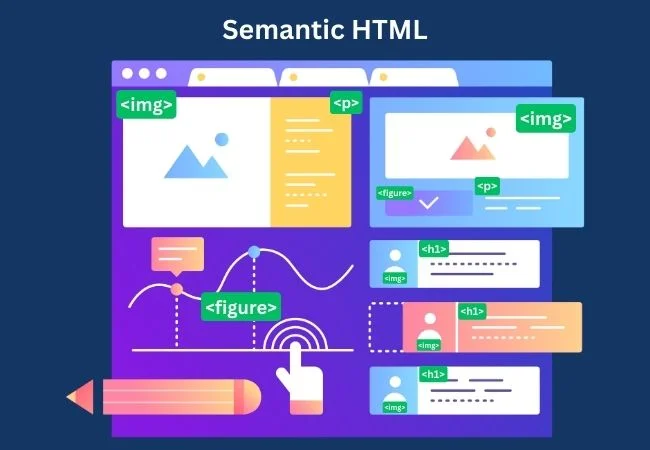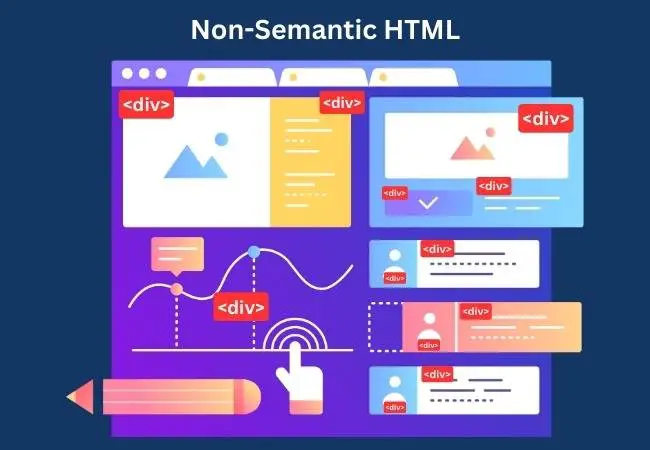The standard markup language, HTML (Hypertext Markup Language) is used to create and structure web pages. In HTML there are two types of elements: semantic and non-semantic elements, which are used to describe the content and structure of a web page. Understanding the difference between semantic and non-semantic HTML is important for web developers and designers, as it can affect the accessibility, usability, and search engine optimization (SEO) of a website.
Semantic HTML
In order to describe the content and meaning of a web page, rather than its appearance we should use the semantic elements. Semantic elements are designed to convey meaning to both humans and machines, such as search engines and screen readers. By using semantic elements, web developers can create web pages that are more accessible and user-friendly.
Examples of semantic elements include headings, paragraphs, lists, tables, and forms. These elements are used to structure content and provide context to users and search engines. For example, using <h1> to <h6> headings helps to organize content and create a hierarchy of information, with <h1> being the most important and <h6> being the least important. Using semantic elements also improves the accessibility of a web page, as screen readers can use the markup to describe the content to visually impaired users.
Non-Semantic HTML
The presentational HTML or so called non-semantic HTML, is used to describe the appearance of a web page, rather than its content. Non-semantic elements are often used to apply styles, such as font size, color, and alignment, to web page elements. Non-semantic elements are not useful for search engines or screen readers, as they do not convey any meaning or structure to the content.
Examples of non-semantic elements include <b>, <i>, <u>, <font>, <center>, and <table>. These elements are often used to create visual effects, such as bold or italicized text, underlined text, font styles and sizes, and centering content. However, these elements should be avoided as much as possible, as they can negatively affect the accessibility and usability of a web page.
Benefits of Semantic HTML
Using semantic HTML has several benefits, including:
- Accessibility: Semantic HTML improves the accessibility of a web page, as it provides context and meaning to content. Screen readers and other assistive technologies can use the markup to describe the content to visually impaired users.
- SEO: Semantic HTML can also improve the search engine optimization (SEO) of a website. Search engines use semantic markup to understand the content and structure of a web page, which can improve its ranking in search results.
- Usability: Semantic HTML makes web pages more usable and user-friendly. By using semantic elements, developers can create web pages that are easy to navigate, understand, and use.
- Maintainability: Semantic HTML makes web pages easier to maintain and update, as it provides a clear structure and organization to the content.
Conclusion
Semantic HTML is an essential component of modern web development, as it provides context and meaning to content. Using semantic elements can improve the accessibility, usability, and SEO of a website, while also making it easier to maintain and update. Non-semantic HTML should be avoided as much as possible, as it does not provide any structure or meaning to content, and can negatively affect the accessibility and usability of a web page. As web development continues to evolve, it is important for developers and designers to stay up-to-date with best practices and standards for creating accessible, user-friendly, and search engine optimized web pages.







This helped me a lot to understand the differences of semantic and non semantic html, thanks so much.